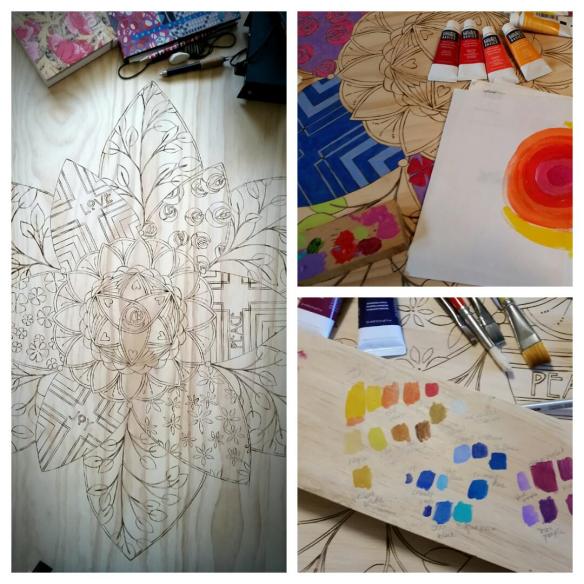I’m always thinking of tools I can bring in to the Makerspace for my students to experience, and learn to use. I’ve brought bread knives to use as saws (always using clear and easy to remember rules, and always supervised by an adult), carpenter pencils and pencil sharpeners, tri-squares, mechanical rulers, mechanical tape measures, and levels.
This spring, as we began our supermarket build, I decided to enrich our world with nuts, bolts, machine screws, adjustable wrenches, phillips head screwdrivers and square head screwdrivers. When my students entered the Makerspace and noticed the new things sorted into our maker-trolly, they immediately began experimenting, asking questions, and sharing thoughts.
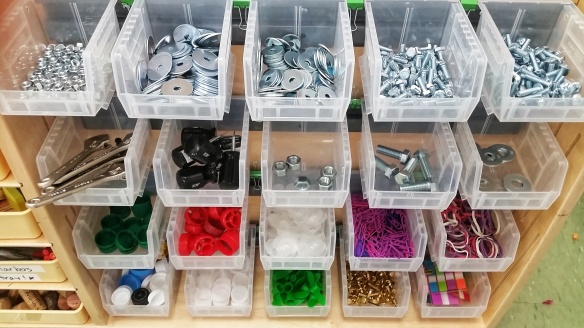
Not all of them knew what the wrench was, or how to use it. I quickly swore those who knew how to use the wrench, to strict secrecy. I told them they had to keep it a secret for one week. If by Friday, the others hadn’t figured it out, they could teach them. But, until then, they had to let the others use their big beautiful brains and experimentation to discover it on their own. Many figured it out, and any that didn’t were happily taught by those in the know.
They loved using the tools and the hardware. Sometimes they would put the bolts/screws, washers, and nuts together using their fingers as the tools, at other times, they used the wrenches and screwdrivers. Our first foray into using them in the build was when they realized they could plunge the bolts/screws into the foam shelf they had created.
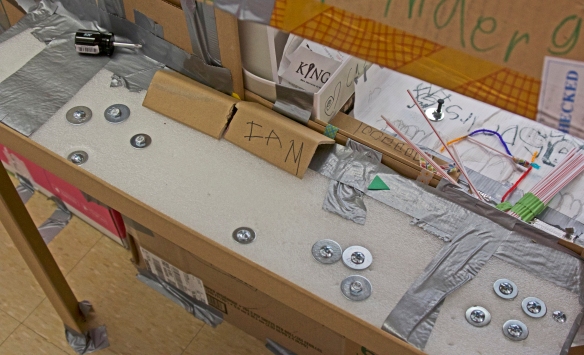
This required me to help them because the foam as actually a bit too thick for the size bolts/screws I had purchased. Cognizant of how impossible it was for them to succeed at this task on their own, I began thinking of specific projects that didn’t require so much help from me.
I came up with two.
The first was an art project. I thought creating people with articulated arms and legs would be a fun way for them to learn about the nuts, bolts, and washers. It required a good bit of thinking, risking, imagining and creating as well as significant manual dexterity and work.
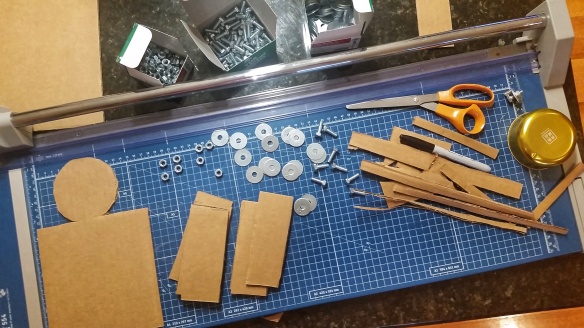
We talked a bit about how to use the hardware, and what was possible because of it — movement, and tightening the arms and legs into particular positions. We also discussed the possible pitfalls — poking yourself with the pencil that you used to make a hole for the bolt, making the hole too close to the edge thereby ripping the cardboard piece, and putting the bolt on backwards which would make hanging it darn near impossible because it was too far from the wall.
They were fantabulous workers, thinkers and creators! They were careful about positioning their holes, and making them. They persisted — counting out their hardware, changing bolts if they put them on backwards, and taking the time needed to accomplish their personal visions for their people.
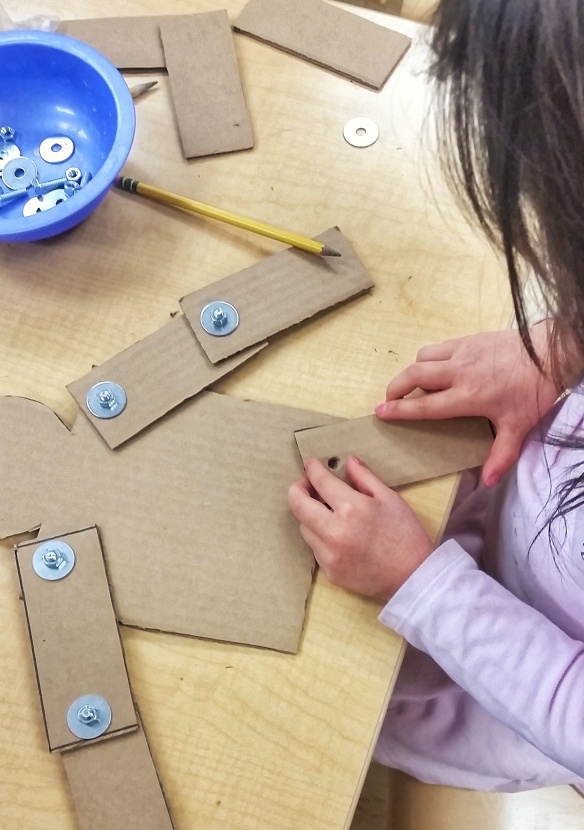
And gosh, did they imagine and create! Mothers with babies, a girl in a tuxedo, Draco Malfoy, girls with 3-D curly hair, a baby sucking a binky, and designer boots are just a bit of what they did.

The second project was creating sturdy shelves for the supermarket. By now they were pros at using the tools and hardware. With intensity and proficiency, they worked together to secure the shelves to the boxes. One climbed inside to install the washer, and tighten the nut. Another worked from the outside, holding the bolt in place to allow it to be tightened.
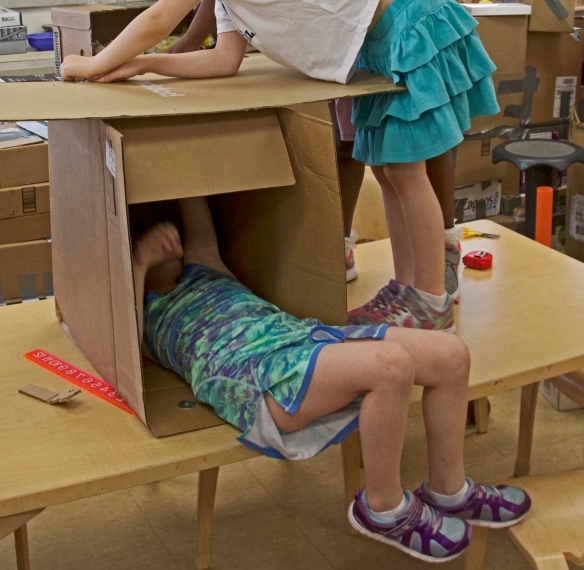
Meanwhile, the girls developed their own use for the tools and their skills. I loved all they thought of doing.
As they played with the hardware, they discovered many interesting configurations outside the normal purview of nuts and bolts. One presented me with this:
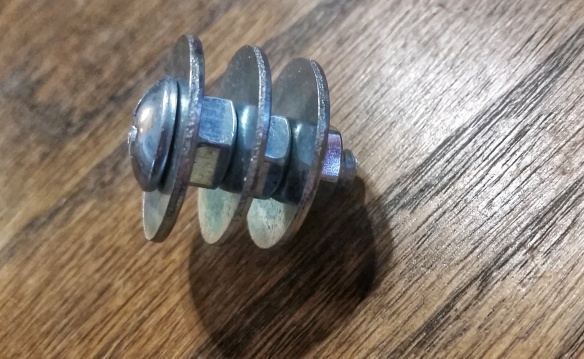
Me: “Thanks! What is it? How do I use it?”
Student “Well, it could be jewelry … (significant thought) … or it could just be a fun rolling toy!”
Me: “Indeed it could! I love it.”
Finally as they progressed even further in their comfort with the tools and hardware — and their belief in themselves as capable of doing anything necessary with them — they enlarged their scope of projects. Seeing me unboxing two new sensory tables, one of my girls noticed the bolts, nuts and washers.
Student: “What’s that, Miss James?”
Me: “New sensory tables.”
Student: “What are you doing with them?”
Me: “I’m going to put them together.”
Student: “I can help!”
I love that she declared her ability to help. She didn’t ask! She knew I would accept help, so she just jumped in as my furniture building colleague! It was awesome!
I am particularly fond of this photograph as it captures the truth of the moment. The tip of the sneaker in the left hand corner is mine. I like that it indicates my presence, but the hands holding the tools are the hands of a 6 year old girl! That is one empowered girl!!!
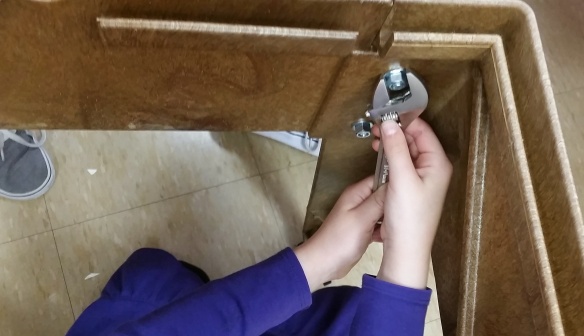
“Rock on with your fantabulous self, my girl. Rock on!”




